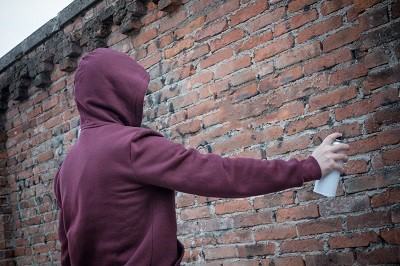BLOG
Common Types of Mischief Charges
Cory Wilson is a Calgary criminal lawyer, Calgary defence lawyer, Calgary mischief lawyer, Okotoks criminal lawyer, Airdrie criminal lawyer, Strathmore criminal lawyer, Cochrane criminal lawyer and Canmore criminal lawyer.

Under the Criminal Code of Canada, there are many forms of mischief related to property. Generally, mischief occurs when a person willfully:
- destroys or damages property;
- renders property dangerous, useless, inoperative or ineffective;
- obstructs, interrupts or interferes with the lawful use, enjoyment or operation of property; or
- obstructs, interrupts or interferes with any person in the lawful use, enjoyment or operation of property
The most common form of mischief is as a result of vandalism such as graffiti, breaking windows or other minor property damage. Despite the relatively minor sounding offence of “mischief”, the offence can carry significant penalties including up to 10 years in prison, a criminal record and impacts on employment opportunities.
Mischief relating to religious property
Everyone who commits mischief in relation to property that is a building, structure or part thereof that is primarily used for religious worship, including a church, mosque, synagogue or temple, or an object associated with religious worship located in or on the grounds of such a building or structure, or a cemetery, if the commission of the mischief is motivated by bias, prejudice or hate based on religion, race, color or national or ethnic origin, is guilty of a hybrid offence.
Properties include, churches, mosques, synagogues, temples and any other object associated with religious worship.
Mischief relating to war memorials
Everyone who commits mischief in relation to property that is a building, structure or part thereof that primarily serves as a monument to honour persons who were killed or died as a consequence of a war, including a war memorial or cenotaph, or an object associated with honouring or remembering those persons that is located in or on the grounds of such a building or structure, or a cemetery is guilty of an indictable offence or an offence punishable on summary conviction.
Mischief in relation to cultural property
Everyone who commits mischief in relation to cultural property as defined in Article 1 of the Convention for the Protection of Cultural Property in the Event of Armed Conflict, done at The Hague on May 14, 1954, as set out in the schedule to the Cultural Property Export and Import Act is guilty of a hybrid offence.
Mischief in relation to computer data
Everyone commits mischief who willfully
- destroys or alters computer data;
- renders computer data meaningless, useless or ineffective;
- obstructs, interrupts or interferes with the lawful use of computer data; or
- obstructs, interrupts or interferes with a person in the lawful use of computer data or denies access to computer data to a person who is entitled to access to it.
Defences to Mischief
In order for an accused to be convicted of mischief, the Crown must prove beyond a reasonable doubt that the accused intentionally committed one of the acts listed in section 430 of the Criminal Code. Simply proving that the accused caused the damage is not sufficient for a mischief conviction. Generally, the Crown must prove:
- Identity of the accused
- Jurisdiction (city and province where act occurred)
- The accused caused the mischief
- Proof of ownership by someone other than the accused
- The damage caused was done willfully or recklessly
- The state of the property before the damage
- Value of the property (above or below $5,000)
If the Crown is unable to prove the essential elements of the offence, the will not be able to secure a conviction. Many times, identity will be a significant issue if there are no witnesses or if the witness only saw the culprit for a fleeting moment.
A full defence to mischief is if the damage was caused by accident. In order to be convicted, the Crown must prove that the accused intended to or was reckless in causing mischief.
Another defence is “color of right”. This is a defence in which the accused held an honest belief that he or she was legally permitted to conduct the act.
The most common form of mischief is as a result of vandalism such as graffiti, breaking windows or minor property damage. Despite the relatively minor sounding offence of “mischief”, the offence can carry significant penalties including up to 10 years in prison, a criminal record and impacts on employment opportunities.
In order to properly defend mischief charges, it is important to have a highly skilled lawyer by your side. Cory Wilson has successfully represented countless individuals charged with mischief.
Alternative Measures Program
In certain circumstances, an accused person may have their mischief charge withdrawn by entering into the Alternative Measures Program. This is a program that diverts offenders from the traditional court system and upon completing certain conditions such as counselling or community service, the mischief charge is withdrawn leaving the accused with no criminal record.
Often, the difference between entering the Alternative Measures Program or not, is having the right criminal defence lawyer. Cory Wilson works tirelessly to ensure that each client who is eligible for the program, is accepted into the program.
Cory Wilson is a criminal defence lawyer based in Calgary. If you have been charged with a criminal offence or are a suspect in a criminal investigation, call today for a free, no obligation consultation.